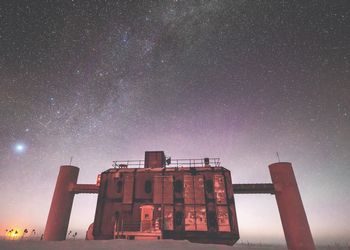A Cosmic Discovery

For just the second time in human history, researchers have identified a source of high-energy neutrinos—elusive subatomic particles produced in some of the universe’s most extreme environments.
The discovery was made by an international collaboration led by MSU and Technical University of Munich researchers at the IceCube Neutrino Observatory in Antarctica and could help researchers open new windows of exploration and understanding into our universe.
Also known as “ghost particles,” neutrinos are one of 12 known particles from which our universe is assembled. These particles originate from violent astrophysical sources, such as exploding stars, black holes and bursts of energetic explosions taking place in distant galaxies.
The IceCube Neutrino Observatory
LOCATION: The Amundsen-Scott South Pole Station, Antarctica
OPENED: Dec. 2010
PURPOSE: To observe the cosmos from deep within the South Pole ice cap.
HOW: Sensors beneath the ice cap distributed over a cubic kilometer search to detect the nearly massless neutrinos.



